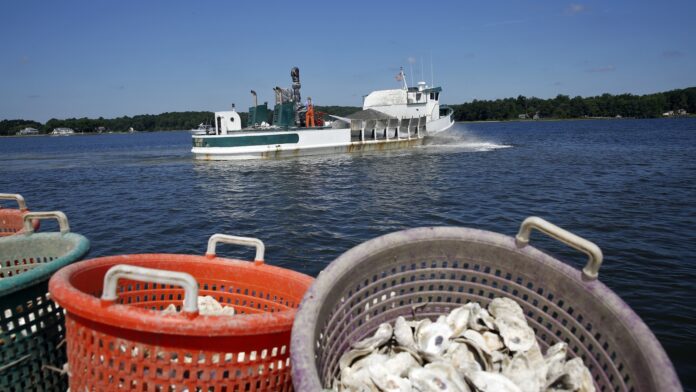The State of Virginia has announced the completion of the largest oyster restoration project in the country, in Virginia’s Piankatank and the Great Wicomico rivers.
Oysters are a critical natural component of Virginia’s work to clean the Chesapeake Bay, as one oyster can filter up to 50 gallons of water a day. The Bay is the largest estuary in the United States with a watershed that encompasses six states that are home to more than 18 million people. Thanks to several major investments, Virginia now provides more than $756 million in funding to help farmers, localities, and wastewater treatment operations reduce pollution from nutrients and sediment.
Virginia has been working to restore the native oyster populations in the Chesapeake Bay with one of the largest and most elaborate plans in the nation and has fully restored four tributaries: the Lafayette, the Eastern branch of the Elizabeth, the Piankatank, and the Great Wicomico. Oyster populations are restored by constructing new reefs and planting young oysters to create new ecosystems.
“As someone who grew up on the Chesapeake Bay, I could not be more proud of the progress Virginia has made,” said Governor Northam. “This administration has invested $10 million for oyster restoration during the past four years. Several years ago, Virginia joined other states on the Chesapeake Bay watershed and agreed to conduct a series of clean-up measures by a deadline of 2025. Today’s announcement is a major step in achieving the goals in the Chesapeake Bay Watershed Agreement. The investments we make in our natural resources—and our environmental stewardship—are paying off.”
Over the past two years, the Virginia Marine Resources Commission deployed more than 50,000 tons of rock and nearly 100,000 bushels of shell to restore 127 acres of oyster habitat in the Piankatank. The Virginia Marine Resources Commission also deployed more than 12,000 tons of rock and 14,000 bushels of shell to restore 24 acres of oyster habitat in the Great Wicomico River.
The Virginia Marine Resources Commission set a record this year with 100 acres for the most oyster reef acres restored in a single year. The Piankatank river oyster restoration effort is the largest restoration project that has been completed in the country.
The Commonwealth worked collaboratively on oyster restoration with federal, non-profit, and shellfish industry partners including the Chesapeake Bay Foundation, the Elizabeth River Project, Lynnhaven River Now, the National Oceanic and Atmospheric Administration, the Nature Conservancy, U.S. Army Corps of Engineers, Virginia Commonwealth University, the Virginia Institute of Marine Science, and W.E. Kellum Seafood.
“These restored rivers will provide hundreds of acres of habitat for not just oysters but various other commercially and recreationally important fish and wildlife that depend on a thriving Chesapeake Bay including Virginia’s striped bass and blue crabs,” said Virginia Marine Resources Commissioner Steve Bowman. “What we have been able to accomplish will benefit Virginia for future generations to come.”
“The success of the Piankatank River oyster restoration project is a great testament to the positive benefits of environmental interest, Commonwealth of Virginia, and Federal partners working side by side with the Virginia oyster industry to enhance the sustainability of the oyster resource,” said Kellum Seafood Vice President Tommy Kellum. “The Virginia oyster industry is very proud to have been a part of this important effort.”
“Oysters are a keystone species in the Bay.” said Chesapeake Bay Foundation Virginia Executive Director Peggy Sanner. “Restoring oysters in Virginia’s rivers is an investment in clean water and healthy fisheries that will benefit our children and future generations. This dramatic progress is an important example of what can be achieved with successful partnerships among local, state, and federal agencies and other stakeholders.”
“The Nature Conservancy engages in shellfish restoration around the world,” said The Nature Conservancy State Director Locke Ogens. “From Australia to Europe, our global shellfish restoration colleagues and partners look to the Chesapeake Bay as the model for how to get large-scale restoration done, and done right.”
This milestone marks the third and fourth Chesapeake Bay tributaries in Virginia to reach the goal for full restoration of the oyster habitat as part of the 2014 Chesapeake Bay Watershed Agreement. Under the agreement, Virginia committed to restoring five tributaries. Recently The Commonwealth added a sixth Bay tributary, the Eastern Branch of the Elizabeth, so Virginia will actually exceed its restoration agreement.
The state has also seen improvements in striped bass numbers through tough limits on recreational and commercial fishing and a shift in the management of menhaden to the state’s fishery experts.


